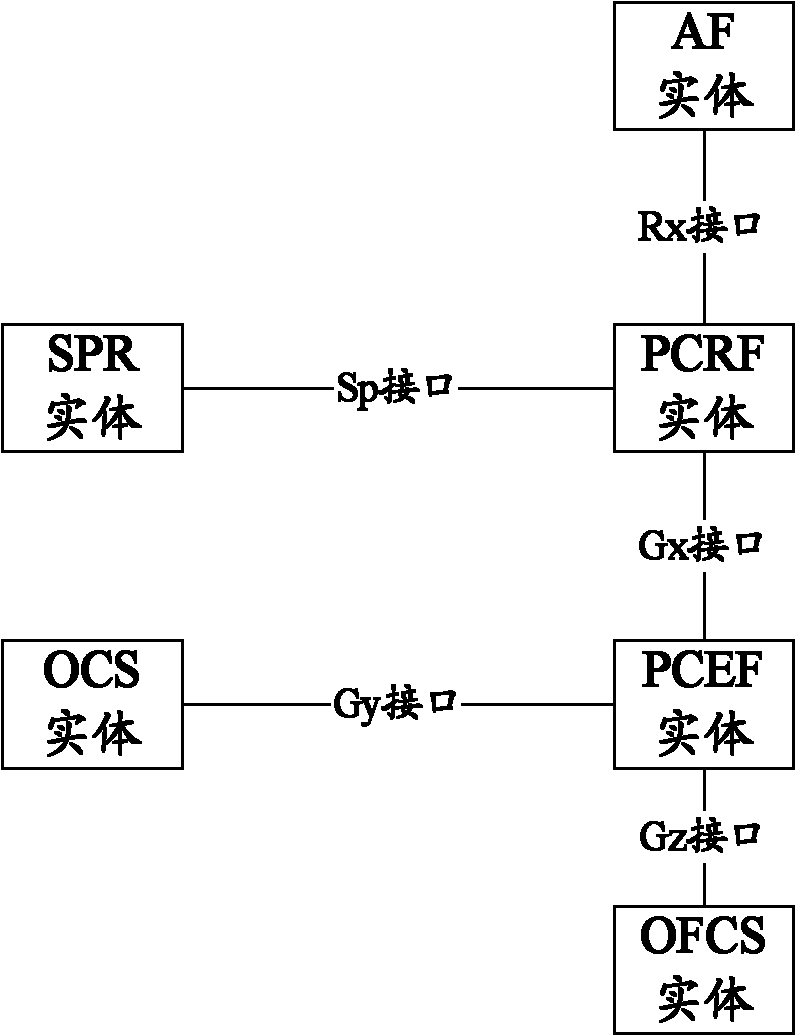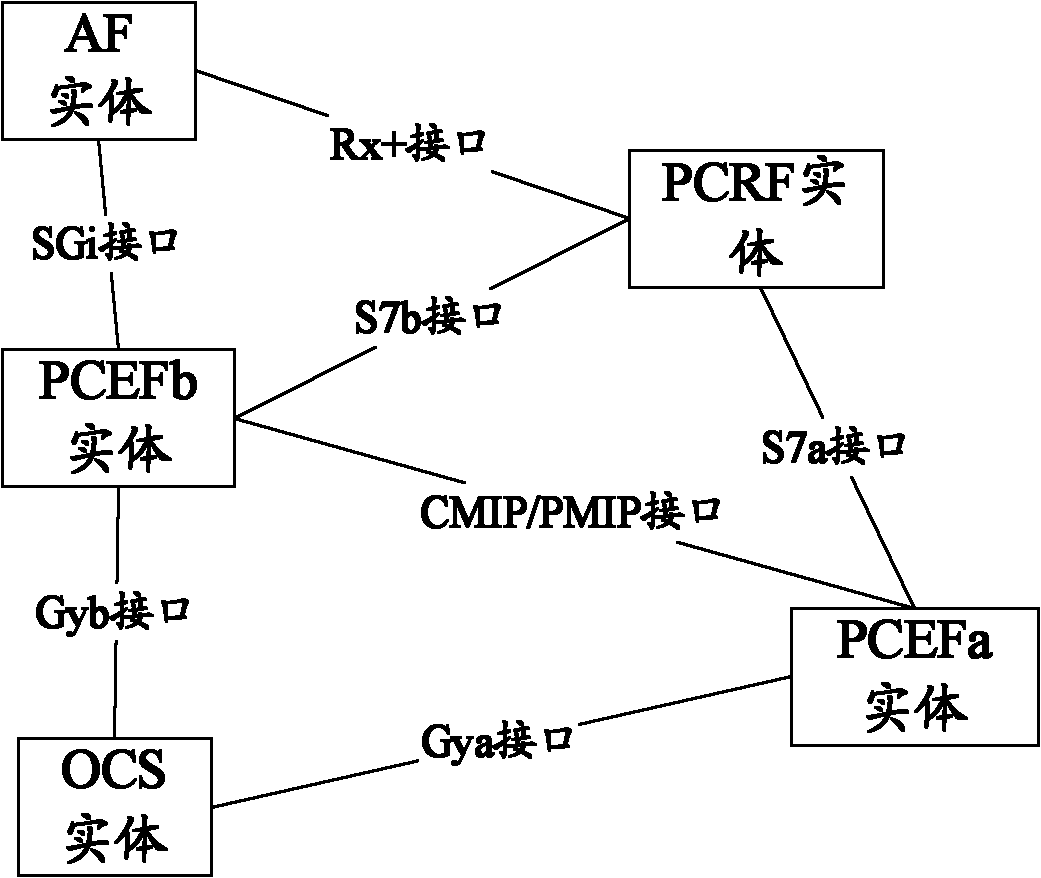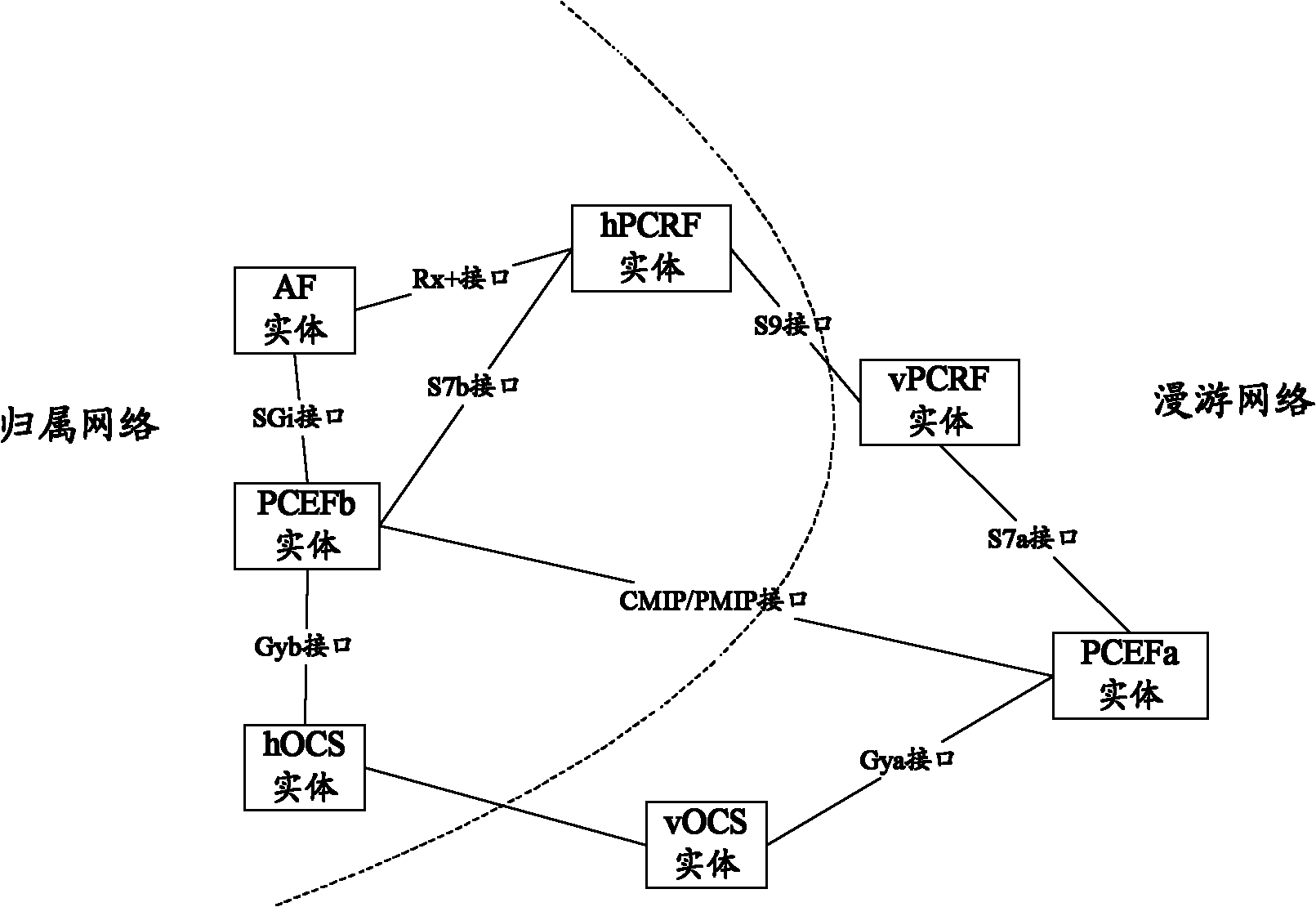IP-CAN (internet protocol-connectivity access network) session establishment method and session deletion method
A network protocol and session establishment technology, applied in connection management, wireless communication, electrical components, etc., can solve the problem that IP-CAN session establishment and deletion methods cannot continue to be used
- Summary
- Abstract
- Description
- Claims
- Application Information
AI Technical Summary
Problems solved by technology
Method used
Image
Examples
Embodiment I
[0065] Figure 5 is a schematic flowchart of an IP-CAN session establishment method in an embodiment of the present invention, as Figure 5 As shown, the method for establishing an IP-CAN session in the embodiment of the present invention includes:
[0066] Step 11, the PCEFa entity receives the IP-CAN session establishment request message;
[0067] Step 12: Mobile registration or bearer establishment is performed between the PCEFa entity and the PCEFb entity. The policy and charging rule function PCRF entity formulates policies and charging control PCC rules for the IP-CAN session, and combines the IP-CAN session information with the established PCC rules are provided to PCEFa entities and PCEFb entities; and
[0068] Step 13, the PCEFa entity returns an IP-CAN session establishment response message.
[0069] Wherein, if the IP-CAN session adopts the online charging mode, the method in the embodiment of the present invention may also be as follows Figure 5 As shown, betw...
Embodiment 1
[0075] Image 6 It is a flowchart of a method for establishing an IP-CAN session in a preferred embodiment of the present invention, and the method for establishing an IP-CAN session provided by this preferred embodiment can be used in figure 2 An IP-CAN session is established under the new PCC architecture shown. like Image 6 As shown, a method for establishing an IP-CAN session in a preferred embodiment of the present invention includes the following steps 101-111.
[0076] Step 101: The PCEFa entity receives an IP-CAN session establishment request message;
[0077] Step 102: The PCEFa entity sends a mobile registration request message or a bearer establishment request message carrying an access point name (APN) and a user identification (user ID) to the PCEFb entity;
[0078] Step 103: the PCEFb entity assigns an IP address to the user;
[0079] Step 104: The PCEFb entity sends the Gx session establishment request message carrying the APN, user ID and assigned IP addr...
Embodiment 2
[0092] Figure 7 It is a flow chart of the IP-CAN session establishment method of the second preferred embodiment of the present invention, and the IP-CAN session establishment method provided by this preferred embodiment can be used in figure 2 An IP-CAN session is established under the new PCC architecture shown. like Figure 7 As shown, the method for establishing an IP-CAN session in the second preferred embodiment of the present invention includes the following steps 201-212.
[0093] Step 201: The PCEFa entity receives an IP-CAN session establishment request message;
[0094] Step 202: The PCEFa entity sends a mobile registration request message or a bearer establishment request message carrying the APN, user ID and PCEFa entity address to the PCEFb entity;
[0095] Step 203: the PCEFb entity assigns an IP address to the user;
[0096] Step 204: The PCEFb entity sends a Gx session establishment request message carrying the APN, user ID, PCEFa entity address and assi...
PUM
 Login to View More
Login to View More Abstract
Description
Claims
Application Information
 Login to View More
Login to View More - R&D
- Intellectual Property
- Life Sciences
- Materials
- Tech Scout
- Unparalleled Data Quality
- Higher Quality Content
- 60% Fewer Hallucinations
Browse by: Latest US Patents, China's latest patents, Technical Efficacy Thesaurus, Application Domain, Technology Topic, Popular Technical Reports.
© 2025 PatSnap. All rights reserved.Legal|Privacy policy|Modern Slavery Act Transparency Statement|Sitemap|About US| Contact US: help@patsnap.com



